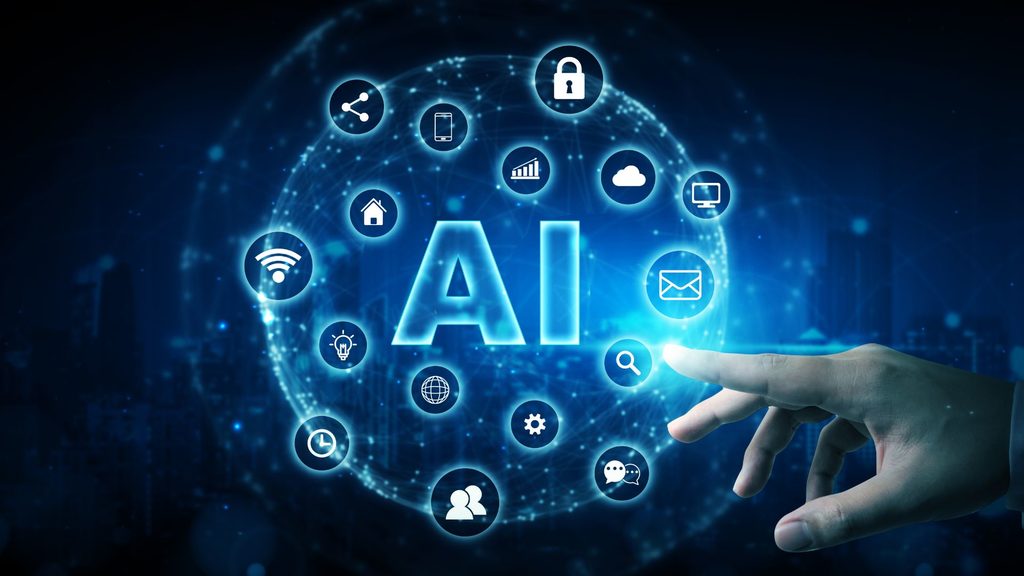A NEW stock market bubble, from a growing sector has just been added to the list of familiar bubbles.
That is known as Artificial Intelligence(AI) bubble.
In a world where money is made and lost quickly, all in a day, like in horse racing, the term bubble denotes speculative buying and selling.
It describes a market phase in which the value of assets, as company shares rise above their intrinsic value.
This rise, unable to sustain the growth on its own, ends in the sudden bursting of the bubble.
Let us go down the time tunnel and recall the past history of bubbles in various sectors.
Birth of new millenium and appearance of irrational exuberance
The surge in internet sector – which saw the rise of companies known as dot.com companies, encouraged by low interest rates in 1998-99 primarily in the United States (US) – was all due to rise in stock valuations.
Poor choice of investments by start-ups caused them to fail without becoming profitable.
Their revenue projections did not materialise.
Their stock valuations were falling and the dot-com bust occurred in 2000.
But lucky survivors were online retailers like E-Bay and Amazon, as they resisted temptations to construct huge warehouses, but low-cost delivery labour intensive measure, which later became highly profitable.
Most of the start-ups entered their industries with bank loans.
As the valuations of new and existing dot-com companies continued to rise, many investors came to believe that the US economy had fundamentally changed and that many of the factors traditionally included in the valuation of a company’s stock— such as the assets and liabilities on its balance sheet, the revenue and profits on its income statement, and market share and cash flow—were no longer directly relevant to assessing the future performance of dot-com companies.
Accordingly, investors poured money into even debt-ridden companies that had no realistic hope of ever turning a profit.
The overconfidence of such investors was the main reason. It is often referred to as “irrational exuberance,” a phrase coined by the then US Federal Reserve Chairman Alan Greenspan.
That led to the dot-com stocks being priced far above the values that traditional valuation factors would justify.
Tulip flower bulb mania
The crisis reminded the United States and other advanced countries, as well as emerging economies, of another craze called tulip flower bulb mania.
It refers to the first speculative bubble in recorded history in the 17th century Dutch Republic, where the price of tulip flowers rose due to speculative mania.
All such craze ended when it collapsed dramatically in 1637.
The term is now used metaphorically to describe any economic bubble in which the price of an asset is running above its intrinsic value before the sudden collapse.
The reasons are now well known:
People began investing in tulip flower bulbs, not for their intrinsic value, but because they were speculating.
They were “money-mad”. They expected prices to continue to rise.
This allowed them to sell them for a quick profit. A futures market emerged, where people traded contracts for the seeds that were still in the ground,
They began exchanging paper ownership several times a day.
Finally, in February 1637, the bubble burst. Prices collapsed, panic selling ensued, and investors suffered worthless contracts and financial losses.
The 2008 stock market crash
This was the culmination of the global financial crisis. It was the most severe economic downturn since the Great Depression.
A period in which stock market, financial and banking crises occurred simultaneously.
It was triggered by the collapse of the US housing bubble and the failure of major financial institutions due to their overexposure to high-risk, interconnected investments, not in US alone, but spreading to Europe and ASEAN nations.
It began with the housing boom, again funded by banks.
The reasons are:
In the years leading up to 2008, the US housing market was fueled by low interest rates and loose credit standards.
Lenders sold “subprime” mortgages with bad credit histories as assets to investors around the world.
The falsely high ratings of credit rating agencies masked the real risk. When US home prices began to fall, borrowers defaulted in large numbers.
Banks overseas that had bought subprime mortgages as assets suffered significant losses.
The investment bank Bear Stearns, which had been heavily invested in subprime mortgages, collapsed and was sold to JPMorgan Chase in a government-backed deal.
Lehman Brothers, the fourth-largest investment bank in the United States, filed for the largest bankruptcy in US history after the government refused to bail it out.
The event sparked global panic.
The US government took over the insurance company American International Group (AIG) with $85 billion in debt to prevent its collapse.
September 29, 2008: The Dow Jones Industrial Average fell 777.68 points in a single day.
The S&P 500 fell by approximately 50per cent from its peak in October 2007 to its bottom in March 2009.
Millions lost their jobs, and millions of Americans lost their homes due to foreclosures.
The crisis quickly spread worldwide through interconnected financial systems, leading to recessions in many developed economies
Artificial intelligence
The debate over the AI bubble is growing. Experts say that high valuations and overconfidence in a few companies are the primary reasons for the bubble’s burst.
However, AI’s transformative potential and productivity gains, make AI fundamental technological change and justify rising valuations.
Some believe that there may be some significant corrections in stock prices, with a more manageable correction.
There may not be a burst.
The AI sector saw its highest capital inflow in 2025, the same level it had in 2014-2024. The US private sector investment alone reached $109.1 billion.
AI maintained a steady share of about 1per cent in the S&P 500 index until 2020.
The rise of AI hardware in the S&P 500 began to make significant changes in the index in early 2023.
The growth was largely driven by the growth of Santa Clara-based chip maker NVIDIA, whose share rose from 1.13per cent at the end of 2022 to 6.6per cent as of June 30, 2024, reflecting investor confidence that AI will revolutionise productivity and economic growth.
Along with investment from dozens of other countries and other companies, the company has invested in semiconductor development, data centers, semiconductor chip manufacturing and other related infrastructure.
IMF’s concerns but US Fed chair differs
However, IMF managing director Kristalina Georgieva warned that current estimates are approaching levels seen before the dot-com crash of 2000.
Many companies are still struggling to show returns and profits from their AI investments.
A new study from the Massachusetts Institute of Technology shows that roughly 95per cent of AI business ventures fail, with only 5 per cent achieving meaningful revenue growth.
Despite more than $44 billion invested in AI startups in the first half of 2025, tangible productivity improvements are limited as AI continues to face challenges with real-world applications.
OpenAI CEO Sam Altman openly acknowledged this.
Jerome Powell, chairman of the US Federal Reserve, does not consider AI to be “another dot-com bubble.”
Last month, October 29, in a press conference, he made the distinction clear.
He stated that the current wave of AI investment is grounded in profitable companies and real economic activity; so, it is very different from the dotcom bubble.
The companies involved in AI utilised their own capital, built by profits over time. He did not cite them by names. Their names are well known: They include:
Nvidia (NVDA): The market leader in AI chips;
Microsoft (MSFT): Known for software dominance and cloud platform (Azure);
Alphabet (GOOG, GOOGL): Google’s parent company has experienced strong growth driven by its Google Cloud division, its DeepMind AI research, and the integration of its Gemini models into core services.
The circular investment, that is by what each of the above companies is investing in the other, was singled out by Jerome Powel.
He highlighted the fact that “they have not resorted to any bank debt”.
The institutionalisation of AI, which has spread across hundreds of billions of dollars in data centers and semiconductor investments, has become the real engine of American growth.
Powell stressed that AI companies’ growth is not driven by Fed’s monetary policy.
Not without caveats
While the current investment boom may seem healthy, Powell did well by issuing a caution: “a permanent productivity revolution depends on the ultimate outcome.”
Does he not reflect the concerns expressed by the Futurist, Roy Amara (1925-2007) in his oft quoted words in 1978, now called Amara’s law?
“We tend to overestimate the effect of a technology in the short run and underestimate the effect in the long run.”
DISCLAIMER: The author was a former professor teaching economics at University of the South Pacific and Fiji National University, ( 1998-2017) and a former Senior Economist, Asian Development Bank, Manila (1982-1997).
Dr T K Jayaraman. Picture: SUPPLIED



